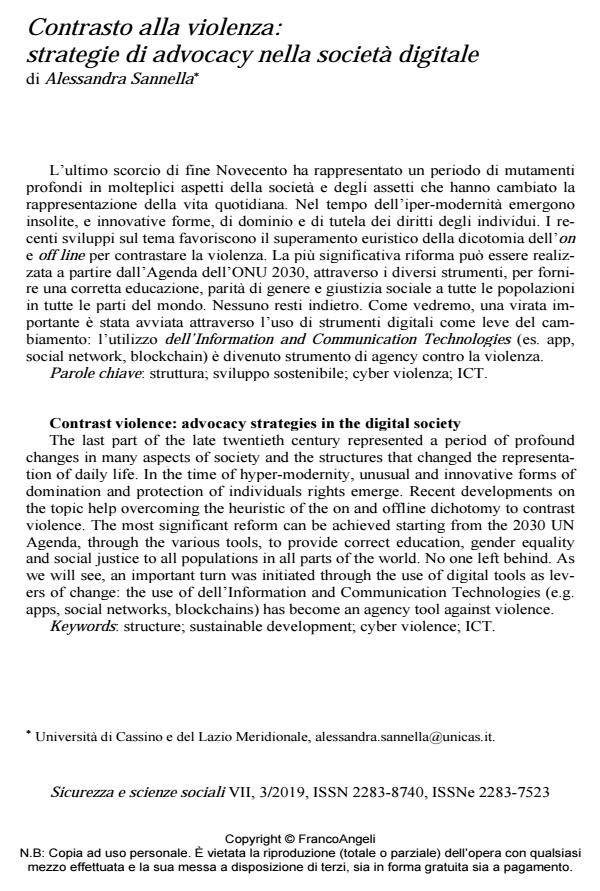Contrast violence: advocacy strategies in the digital society
Journal title SICUREZZA E SCIENZE SOCIALI
Author/s Alessandra Sannella
Publishing Year 2020 Issue 2019/3
Language Italian Pages 10 P. 152-161 File size 154 KB
DOI 10.3280/SISS2019-003011
DOI is like a bar code for intellectual property: to have more infomation
click here
Below, you can see the article first page
If you want to buy this article in PDF format, you can do it, following the instructions to buy download credits

FrancoAngeli is member of Publishers International Linking Association, Inc (PILA), a not-for-profit association which run the CrossRef service enabling links to and from online scholarly content.
The last part of the late twentieth century represented a period of profound changes in many aspects of society and the structures that changed the represen-tation of daily life. In the time of hyper-modernity, unusual and innovative forms of domination and protection of individuals rights emerge. Recent developments on the topic help overcoming the heuristic of the on and offline dichotomy to con-trast violence. The most significant reform can be achieved starting from the 2030 UN Agenda, through the various tools, to provide correct education, gender equali-ty and social justice to all populations in all parts of the world. No one left behind. As we will see, an important turn was initiated through the use of digital tools as levers of change: the use of dell’Information and Communication Technologies (e.g. apps, social networks, blockchains) has become an agency tool against vio-lence.
Keywords: Structure; sustainable development; cyber violence; ICT.
Alessandra Sannella, Contrasto alla violenza: strategie di advocacy nella società digitale in "SICUREZZA E SCIENZE SOCIALI" 3/2019, pp 152-161, DOI: 10.3280/SISS2019-003011